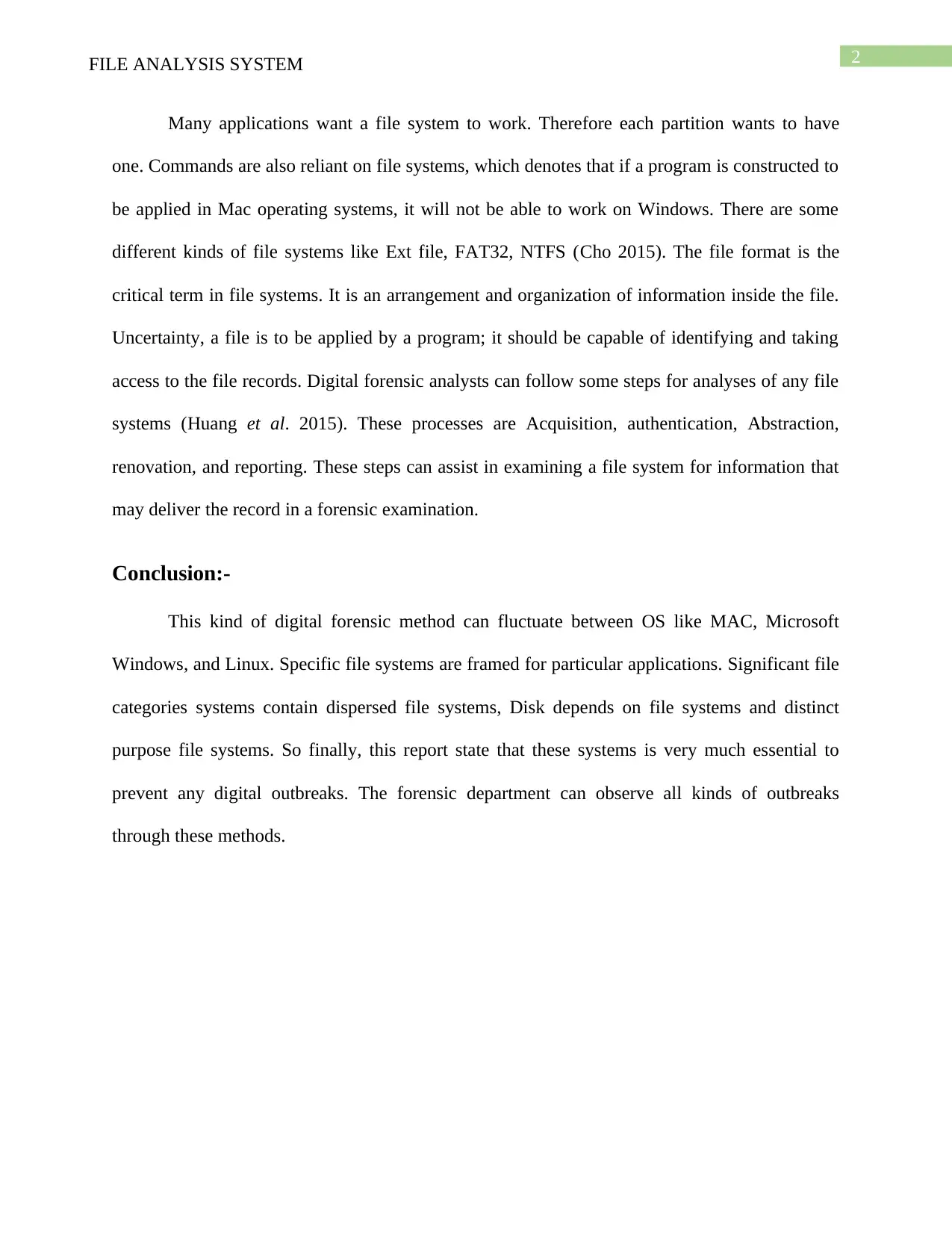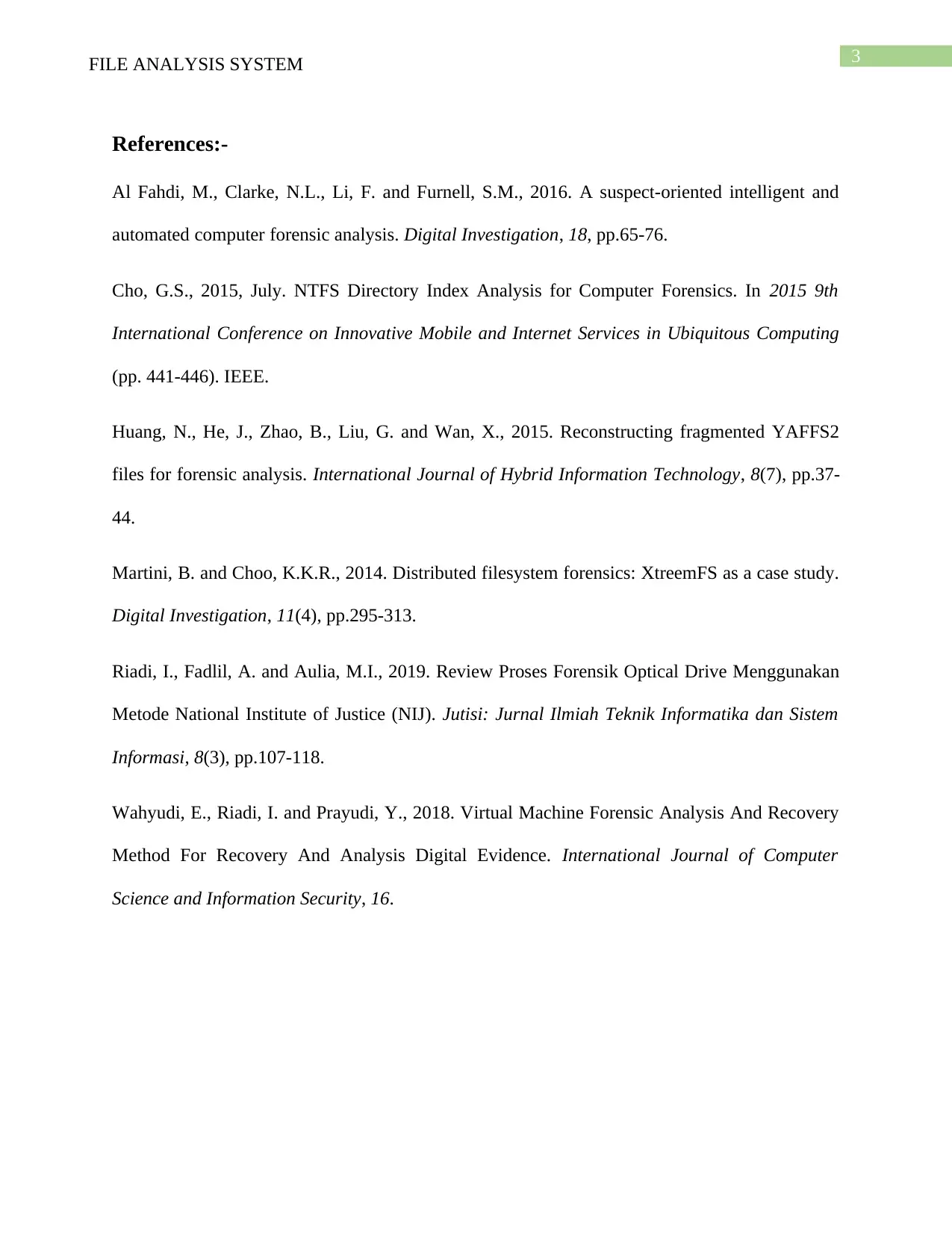University Report: File Analysis System and Digital Forensics
VerifiedAdded on 2022/09/12
|4
|877
|22
Report
AI Summary
This report provides an overview of the File Analysis System, a critical component of digital forensics. It explores the methods used in file system analysis, emphasizing the importance of understanding file formats and the organization of data within a system. The report delves into the process of file system analysis, including acquisition, authentication, abstraction, renovation, and reporting. It also discusses various file systems like FAT32, NTFS, and Ext, highlighting their roles and functionalities. The evaluation covers the significance of metadata, password protection, and the organization of files in blocks and directories. The report concludes by emphasizing the importance of these systems in preventing digital outbreaks and assisting forensic departments in observing digital evidence. The report refers to various sources like Al Fahdi et al. (2016), Cho (2015), Huang et al. (2015), Martini and Choo (2014), and Riadi et al. (2019) to support the findings.
1 out of 4










![[object Object]](/_next/static/media/star-bottom.7253800d.svg)